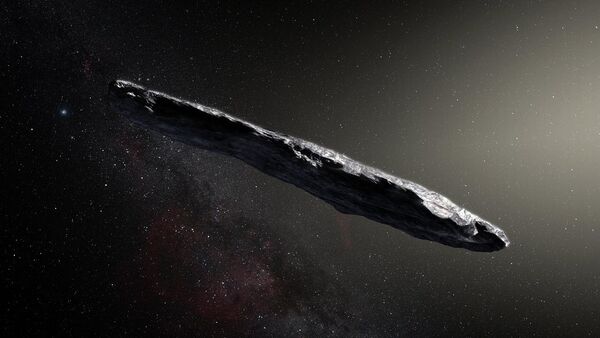The traveler, which was given the name `Oumuamua, Hawaiian for "messenger from afar," was first discovered in 2017 by researchers with the Panoramic Survey Telescope Rapid Response Systems (Pan-STARRS), located on Maui. From the moment researchers spotted the oddly shaped object, they weren't exactly sure how to classify it: first it was a comet, then an asteroid, before astronomers deemed it simply an interstellar object.
But now, thanks to the hard work of researchers led by the European Space Agency, `Oumuamua is back to being considered a comet, since it's not solely being guided by the sun's gravity as a planet or asteroid would be, according author Marco Micheli, the lead author on the study.
"Unexpectedly, we found that `Oumuamua was not slowing down as much as it should have due to just gravitational forces," Micheli told USA Today. "We think this is a tiny, weird comet… we can see in the data that its boost is getting smaller the farther away it travels from the sun, which is typical for comets."
"It's definitely an exciting discovery," he added.
According to Micheli, after analyzing `Oumuamua's trajectory, researchers determined that the 800-meter-long object wasn't solely being pushed on its journey by a gravitational pull of the sun, planets and any other solar system objects.
By slapping the comet label on the mysterious object, researchers are better able to explain `Oumuamua's non-gravitational acceleration, since comets are propelled by outgassing, Space.com reported.
Though `Oumuamua isn't your typical comet, as it lacks a coma — the cloud of gas and dust that envelops around the nucleus of the comet — the mystery remaining behind the object now is its origin.


